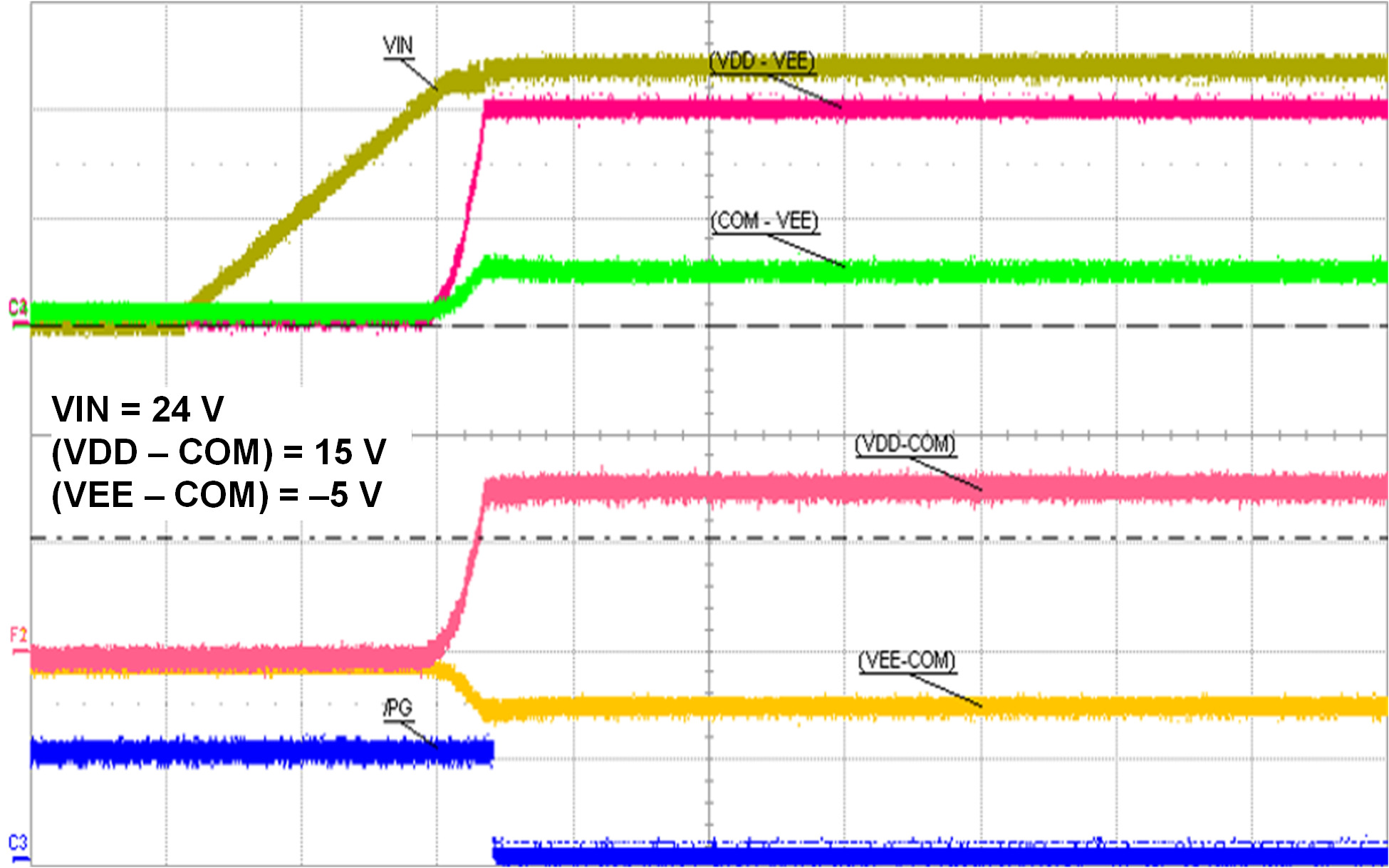TIDUF23 may 2023
- Description
- Resources
- Features
- Applications
- 5
- 1System Description
- 2System Overview
-
3Hardware, Software, Testing Requirements,
and Test Results
- 3.1 Hardware Requirements
- 3.2 Test Setup
- 3.3 Test Procedure
- 3.4 Test Results
- 4General Texas Instruments High Voltage Evaluation (TI HV EVM) User Safety Guidelines
- 5Design and Documentation Support
- 6Terminology
3.4.1 Isolated Bias Supply
The startup behavior of UCC14240-Q1 is validated as shown in Figure 3-18.
 Figure 3-18 UCC14240-Q1 Power-up
Sequence
Figure 3-18 UCC14240-Q1 Power-up
SequenceThe load regulation test is performed to verify the stability of UCC14240-Q1. The electronic load is connected between VEE and VCC, with the load steps from 0 to 80 mA. Measured output voltage is presented in Table 3-5.
Table 3-5 UCC14240-Q1 Load
Regulation
| Load(mA) | Vout(V) | Power(W) |
|---|---|---|
|
10 |
18.853 |
0.188 |
|
20 |
18.848 |
0.377 |
|
30 |
18.84 |
0.565 |
|
40 |
18.834 |
0.753 |
|
50 |
18.83 |
0.941 |
|
60 |
18.828 |
1.13 |
|
69 |
18.825 |
1.3 |
|
80 |
18.819 |
1.505 |
The nominal voltage value is 19 V and the equation for the load regulation is:
Equation 6.